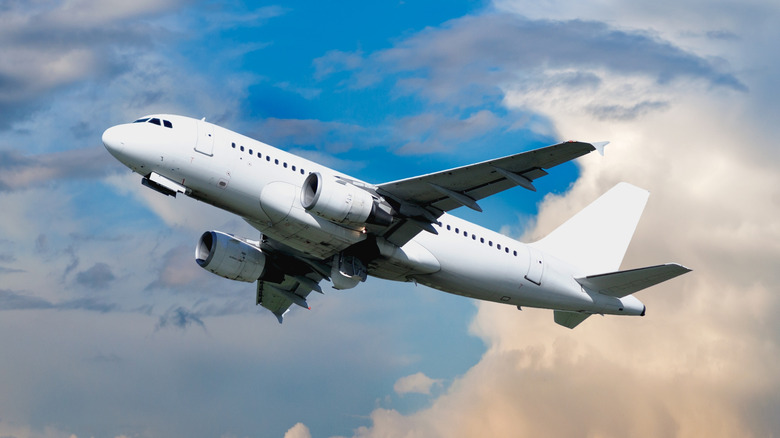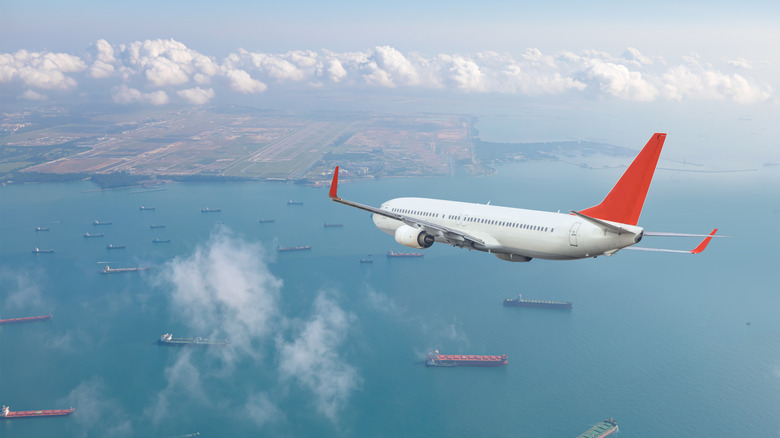Why Planes Don't Fly In A Straight Line On A Map
If you take a plane from Los Angeles to Istanbul, you might be surprised to look out your window mid flight and see Greenland. At first, this route seems completely nonsensical. The direction from Los Angeles to Istanbul on a map is almost directly east, so why would a plane fly thousands of miles north and south in the process?
If you plot the routes of every plane flight each day on a map, you'll find that most of them travel along big, arcing paths similar to the course from L.A. to Istanbul. Very few flights actually travel in a straight line on a map. This comes as a surprise to many, who assume that the shortest route between two points is always a straight line, but the reality is a little more complicated than that.
The reason that planes rarely fly in straight lines has little to do with the planes themselves, and a lot to do with how we draw maps. Earth is a sphere, but maps are two-dimensional, meaning that when you translate reality to maps, you're actually switching between different kinds of geometry, from three-dimensional, non-Euclidean geometry to two-dimensional Euclidean geometry.
The most common form of global map, called the Mercator projection, is notorious for distorting perceptions (Greenland isn't really that big). The hypothetical flight path from L.A. to Istanbul actually is a mostly straight line, but because it follows the curvature of the globe, it looks curved when you plot it on a Mercator projection map.
Flight paths also depend on air currents
The curved path taken by most commercial airplanes is commonly called a great circle route. It is most widely used in flights travelling between North America and Europe or Asia. Returning to that hypothetical L.A. to Istanbul flight, taking the great circle route actually saves a lot of time compared to cutting straight east across the Atlantic because, the further towards the poles you travel, the smaller the Earth's circumference, and therefore the flight distance, is.
Flights don't always follow the great circle route exactly, though. Sometimes, they take a slightly curvy route, which they do in order to take advantage of air currents in the atmosphere. The most important air currents for airplanes are the jet streams. Jet streams are like rivers, but instead of water, they are made of fast-moving air swirling in a band around the globe. Jet streams can provide a helpful tailwind for airplanes, but they only blow from west to east.
Flights traveling from west to east typically deviate from great circle routes in order to get a speed boost from jet streams. Jet streams fluctuate depending on the weather, meaning these routes can be different from one flight to the next. However, flights traveling east to west would be slowed down by the jet stream, so they stick to great circle routes instead. That's why flying west to east takes less time than flying east to west.

